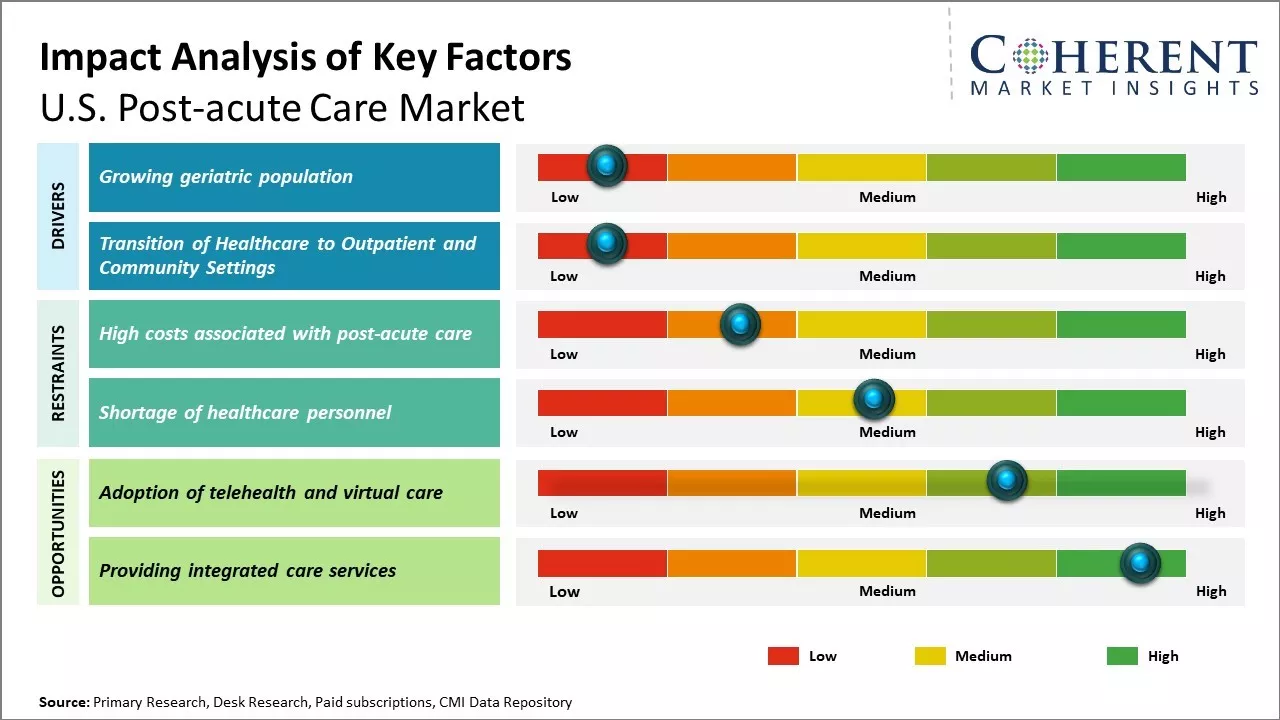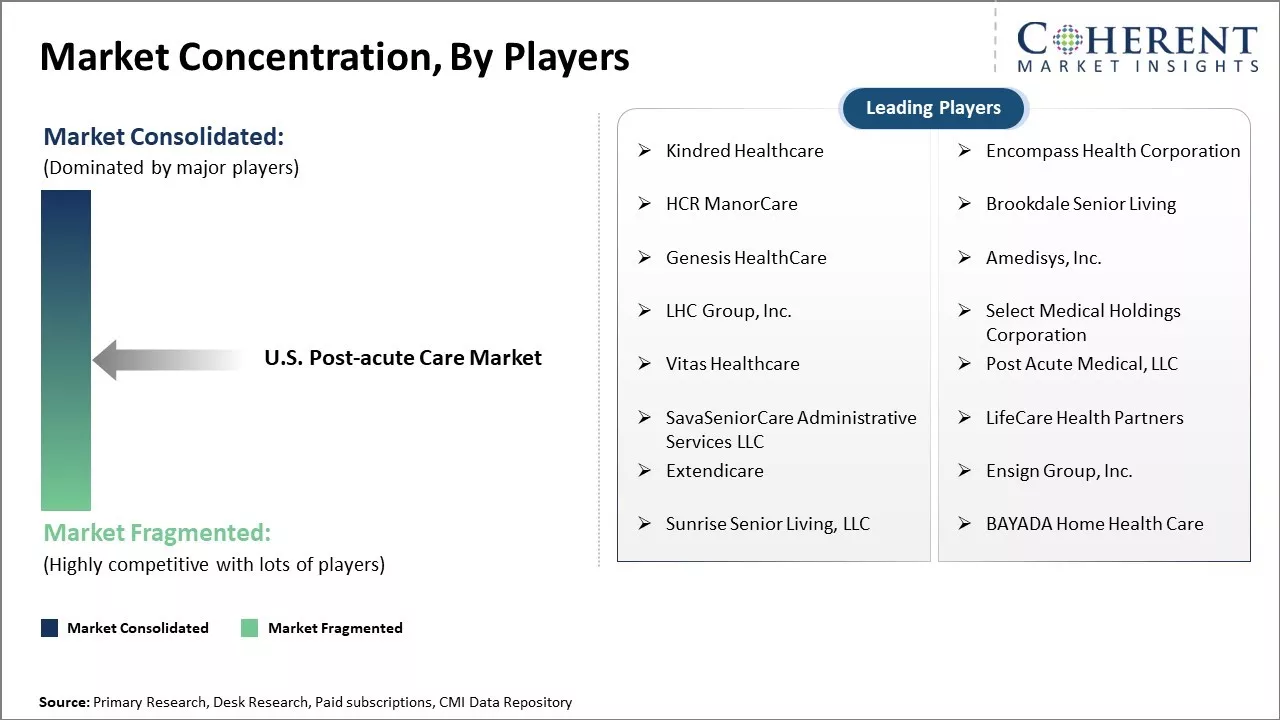U.S. post-acute care market is estimated to be valued at USD 407.89 Bn in 2025 and is expected to reach USD 668.37 Bn by 2032, exhibiting a compound annual growth rate (CAGR) of 7.3% from 2025 to 2032.

To learn more about this report, Request sample copy
The market is witnessing steady growth due to rising geriatric population in the U.S. As per estimates, population aged 65 years and above is expected to double from 52 million to around 95 million by 2060. Older adults often require post-acute care services such as skilled nursing facilities, inpatient rehabilitation facilities, long-term care hospitals and home health care for recuperating after illnesses or surgery. With growth in elder demographics, there will be huge demand for post-acute care services. Increased accessibility of these services, along with provision of better health benefits from public and private insurers, can drive the U.S. post-acute care market growth.
Growing geriatric population
Growth in the post-acute care market in the United States may be fueled by the aging population, or individuals 65 and over. More and more senior Americans will need post-hospitalization care as baby boomers continue to reach retirement age. The number of Americans 65 and older is predicted to rise from 57 million in 2019 to over 88 million by 2050, more than doubling their proportion of the country's total population from 16% to over 20%, according to figures released by the U.S. Census Bureau. People's ability to live independently declines with age, and they are more prone to experience long-term health issues, functional restrictions, and even transient disability from diseases or accidents that call for assistance or rehabilitation. Post-acute care serves as an important middle ground between full recovery at home or the need for long-term nursing home care, through options like skilled nursing facilities, inpatient rehabilitation facilities, long-term care hospitals and home health agencies. Growing aging population can boosts demand for convalescent services as well as management and support of lingering or worsening health issues. For instance, in October 2022, according to the data from the World Health Organization, the number of adults aged 60 years worldwide is expected to more than double, from less than 1 billion in 2020 to around 2.1 billion by 2050 due to continued increase in life expectancy. The WHO has also found chronic conditions to be the leading cause of disability, and this boosts demand for long-term, post-hospitalization care. As life expectancies lengthen on a global scale, more healthcare systems will face resource challenges in caring for their growing senior populations. The American post-acute care sector is still in its relatively early stages of accommodating these demographic trends but already finds itself responding to escalating needs.

To learn more about this report, Request sample copy
Transition of healthcare to outpatient and community settings
Transition, occurring in the overall healthcare system, from traditional inpatient hospital stays to greater emphasis on outpatient services and keeping care in community settings can drive the market growth. Pressures to reduce hospital readmission rates, shorten average patient stay in hospitals, controlling escalating healthcare costs, and patient preferences to receive care in more comfortable and familiar surroundings can drive the market growth. Post-acute care providers are well positioned to play an important role in this transition by providing services like skilled nursing, therapy, wound care, chronic disease management, and others in facilities located in the community instead of in acute care hospitals. This allows for a continuum of care and smoother transition from hospital to home with support services tailored to individual needs for rehabilitation or recovery. The shift towards value-based reimbursement models also creates incentives for post-acute providers to demonstrate quality outcomes and patient satisfaction in order to remain preferred partners in this restructured healthcare environment centered around delivering high quality cost-effective care.
Joining thousands of companies around the world committed to making the Excellent Business Solutions.
View All Our Clients